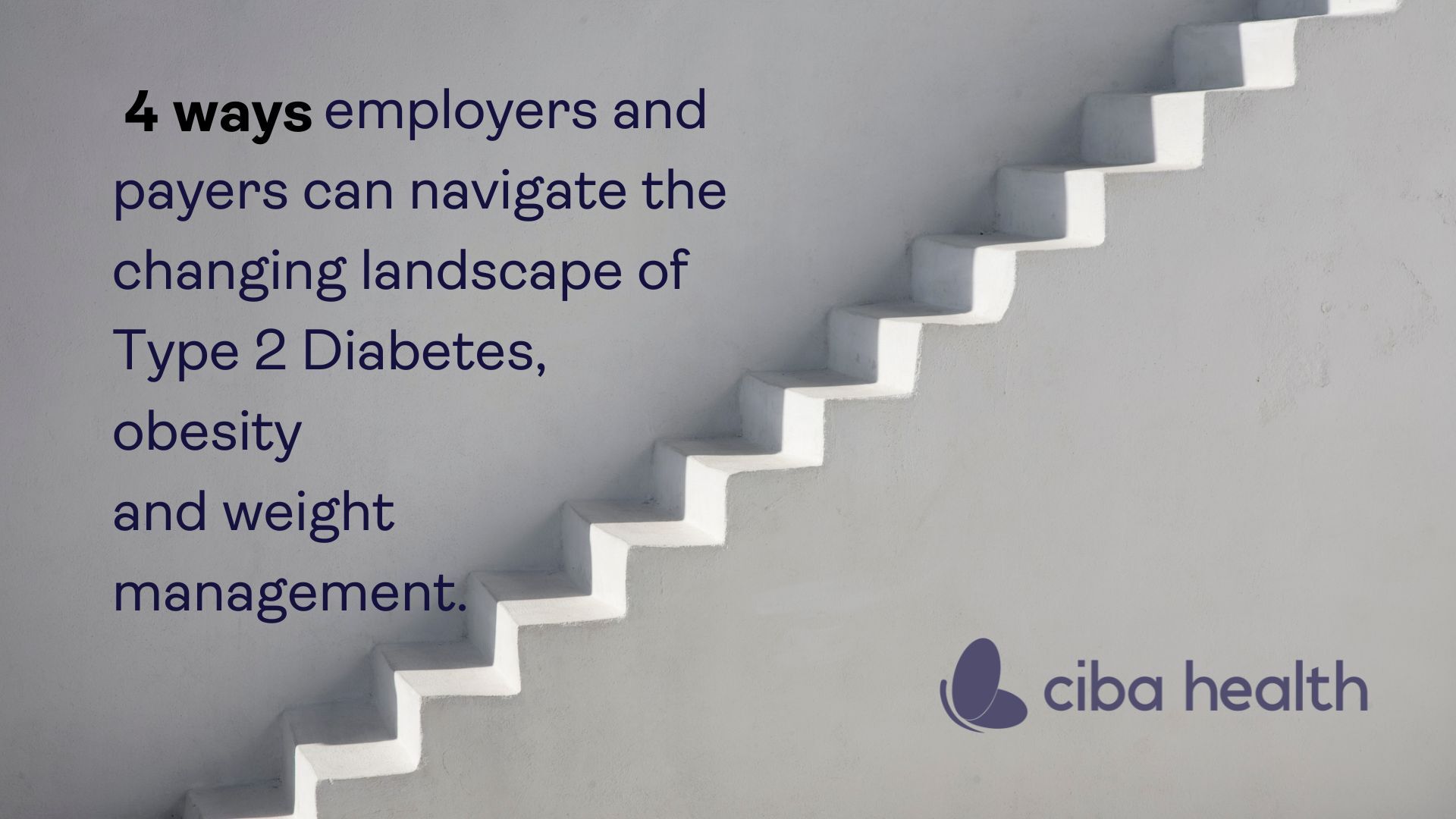4 ways employers and payers can navigate the changing landscape of T2D, obesity and weight management.

In recent years, select GLP-1a drugs have become a common treatment for Type-2 diabetes, and drugs in that class have been approved for weight loss. Utilization of these drugs have been driven by social media influencers and advertising. Combined with the fact that more than 41% of U.S. adults identified as obese, the demand for GLP-1a drugs for weight loss has increased exponentially.
According to a recent Prime Therapeutics study, among those individuals who initiated GLP-1 drugs for weight loss at one year follow-up, those patients had a significantly higher total cost of care, at $7,727 per person. Adherence to these drugs was just 27% of individuals taking GLP-1 drugs after one year. Among GLP-1 adherent individuals, the increase in costs was even higher, double that of the matched controls, at $13,218 higher total cost of care per person.
Prime forecasts that an increase of GLP-1a weight loss utilization by 1% of an insured population would bring an additional $14.50 per member per month (PMPM) expense for most self-insured employers – an increase of more than 5% of their entire drug spend budget.
On top of the cost consideration, relying solely on medicine is insufficient. Obesity and type 2 diabetes treatment is an intricate process with numerous obstacles that could impact its efficacy. To build a truly effective and cost-effective plans for members here are four specific areas that employers and payers can concentrate on:
1. Prevention.
Preventing obesity from developing in the first place is critical, as it eliminates the need for costly medical interventions and treatments down the line.
Investing resources in prevention programs is an astute strategy that can lead to significant improvements in health outcomes, especially for high-risk groups. Such programs can include education about healthy eating habits, exercise and fitness regimes, and access to support systems such as professional counseling or community support groups. In addition, employers can encourage physical activity and healthy lifestyles by offering discounted gym memberships, introducing healthy eating options in the workplace, and creating a culture of wellness.
Preventing obesity can thus lead to significant savings for payers and employers, reducing the burden on healthcare and insurance systems. According to a study by the Robert Wood Johnson Foundation, an investment of $10 per person per year in community-based prevention programs can result in net savings of more than $16 billion over ten years, resulting from reduced healthcare costs and improved productivity.
Furthermore, preventive measures can also improve overall quality of life for individuals, leading to greater happiness and well-being. Focusing on prevention equips individuals with the knowledge and tools they need to make better lifestyle choices, leading to a healthier society as a whole.
2. Behavioral Change.
Studies have shown that behavioral change programs can produce long-lasting results by addressing the root causes of weight gain and diabetes. Behavioral change programs employ several techniques to motivate individuals towards their desired goals.
Self-monitoring, goal-setting, and positive reinforcement are some of the most effective strategies utilized in these programs. By tracking food intake, physical activities, and behavior changes, participants can analyze their progress and adjust their plans accordingly. Additionally, setting achievable goals and celebrating milestones increases participants’ confidence, making it easier for them to maintain healthy habits.
3. Whole-Health, Root-Cause Approach.
Instead of investing in expensive drugs, employers and healthcare plans are increasingly prioritizing helping people target the underlying reasons for their weight gain and chronic disease. This requires a personalized, precision-based approach that considers each person’s unique biology and lifestyle. Ciba Health’s root-cause methodology is a prime example of such an approach, using cutting-edge technologies such as AI and precision medicine to create tailored care plans and lifestyle strategies that address the underlying causes of cellular dysfunction.
The Ciba Health approach eliminates the need for GLP1 drugs and improves overall health while effectively saving the healthcare industry millions of dollars.
4. Step Therapy and/or Prior Authorization for Medications.
While medications can provide relief to those who truly need it, over-reliance on medication can actually exacerbate chronic conditions and cause additional health problems. There is a growing trend among employers and payers to encourage the population to reverse their chronic conditions using the whole-health root-cause approach before turning to medications.
One example of this growing trend is the use of Ciba Health’s “Type 2 Diabetes Reversal Program” and “Prediabetes, Obesity and Weight Management Program” as a step therapy to accessing GLP-1 medications. This means that in order to be authorized to use costly medications that fail to address the root cause of the disease, patients must first enroll in and complete a root-cause program that has a success rate of 98% in reversing the conditions and associated weight issues without medication.
As a result, employers and payers can enjoy financial cost-effectiveness without compromising employee or members access to the care they need. And with Ciba Health’s sustainable and effective care mission, everyone comes out ahead.
In a world where healthcare costs are skyrocketing, obesity and chronic conditions are becoming increasingly common, taking a sustainable root-cause approach is becoming more and more necessary. By focusing on the root cause of disease and working to address it in a holistic manner, patients can achieve long-term success and improved health outcomes, while also reducing the burden on employers and payers.

